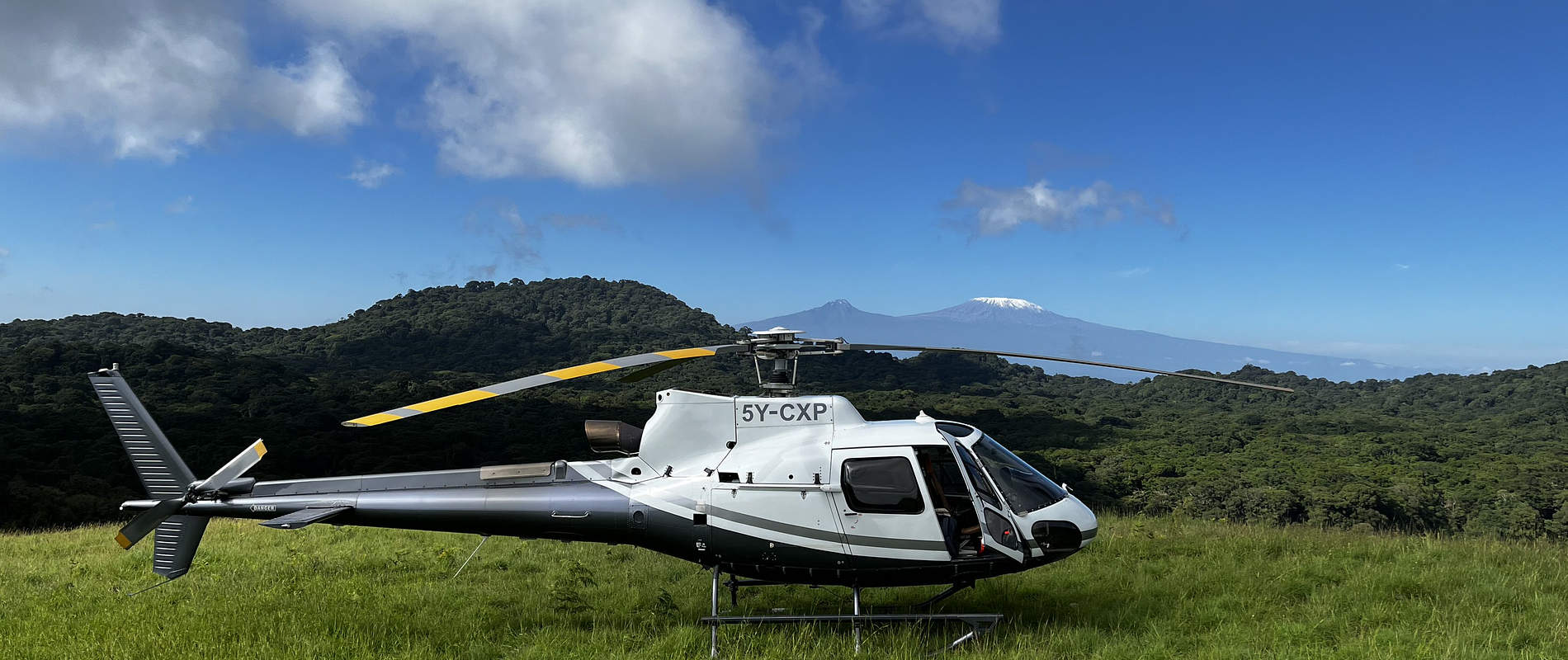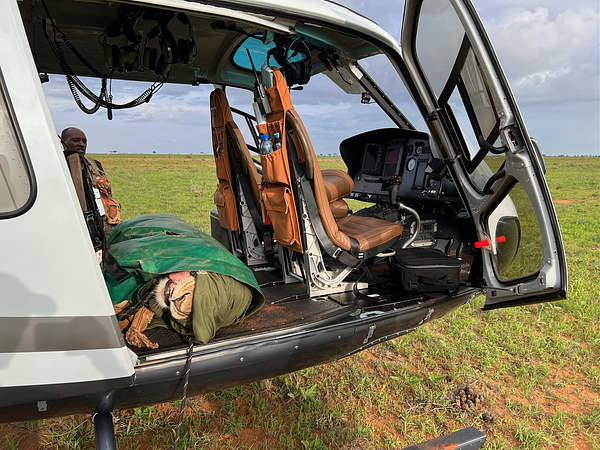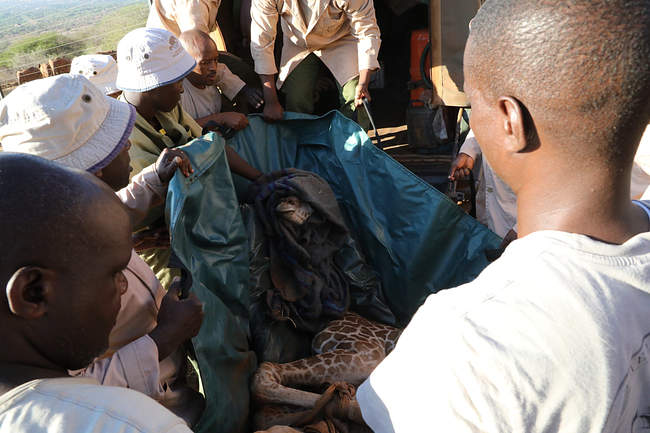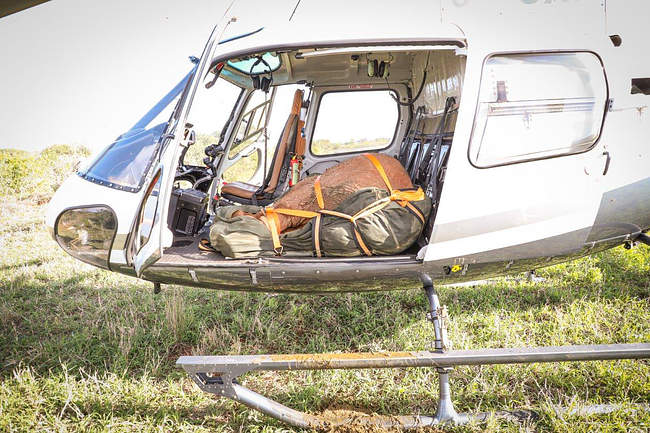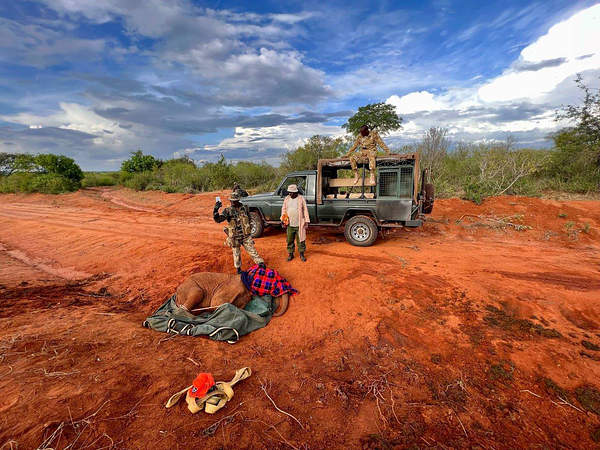Another busy month for the SWT Airwing was punctuated by the end of the prolonged dry season, which came to a head in December with widespread rains bringing significant respite for wildlife.
In December, sightings of illegal activities by fixed-wing aircraft pilots were limited almost entirely to livestock, which was being illegally herded into both Tsavo East and Tsavo West National Parks in large numbers. Poaching activity within the Parks was minimal, which is fairly typical for this time of year. Outside of Tsavo East NP, on Galana and Kulalu Ranches where the Sheldrick Trust has begun intensive anti-poaching operations, there was a huge quantity of bushmeat poaching activity uncovered: a direct result of aerial operations we conducted on both ranches. These patrols also highlighted observations recorded elsewhere, being a direct relationship between charcoal burning and poaching: where there is charcoal burning, bushmeat poaching often follows. On one flight, an SWT pilot spotted 8 motorbikes loaded with bushmeat headed for the local market, with antelope carcasses clearly visible on the backs of the motorbikes.
Although no other arrests were made as a result of aerial sightings, several other confiscations of motorbikes and poaching paraphernalia were made on separate patrols. While evidence of poaching is not always evident from the air, there was a huge amount of charcoal activity observed on patrols, including hundreds of charcoal sacks and charcoal kilns, as well as dozens of charcoal camps and harbours. Patrols in South Kitui National Reserve also revealed large-scale charcoal operations as well as a significant quantity of livestock and livestock related activity.
A small number of human-wildlife conflict (HWC) cases were responded to us December, with both fixed-wings and helicopters responding to requests to search for problem elephants outside of the Tsavo and Chyulu National Parks. The helicopter assisted by pushing elephants back into the parks or other protected areas on multiple occasions. The most unusual HWC case in December involved a Tsavo lion that had somehow found itself in a heavily settled area of Kilifi, on the coast.

Wide Satao, one of Tsavo, and Kenya's, famous tuskers, found recumbent
Several other cases involving the vet and/or a rescue were attended to by SWT helicopter. In Tsavo West, the SWT/KWS Tsavo Mobile Vet Unit received a worrying report of an elephant calf that had collapsed by the side of the road. In addition to this calf, another 18-month-old elephant calf was found abandoned near Maktau. Two other cases occurred on ranches to the east of Tsavo East. The first was thought to be an elephant that was treated last year with a snare wound on its ankle. The other case had a less happy ending and involved a well-known tusker called Wide Satao. There was no suspicion of foul play in the case of Wide Satao: He had no signs of internal issues or life-threatening injuries. A weakened body condition after such a difficult dry season, coupled with the mire created by intense rain that finally arrived to Tsavo in December, contributed to his demise. On another occasion, in the north of Tsavo East, a report came in of a severely injured wild dog, dragging its back legs as if partially paralysed. The wild dog was picked up by the helicopter and transported to the SWT Field Headquarters in Kaluku where it was collected by the Tsavo Mobile Vet Unit to be cared for in Voi. Only one elephant carcass was discovered during aerial patrols in December, belonging to a 5-year-old calf, thought to be a drought victim.
Several other callouts were attended to by SWT helicopters in December, including the rescue of a baby giraffe, which was taken to the SWT's Kaluku Nursery. Another rescue was of a truck driver who had gotten stuck in a remote part of Tsavo East overnight without food and with very little water. Later in the month, an urgent request came in to Medevac a young boy from the town of Kone on the eastern boundary of Tsavo East who had a snake bite on his face.

A big highlight in December, beyond the transformation of Tsavo from a dusty landscape to a green paradise, was the sighting of 15 black rhinos in Tsavo East, a record number in a single patrol representing 68% of the entire Tsavo East black rhino population.
Also sighted were leopard and wild dog, as well as significant numbers of elephant and giraffe.

